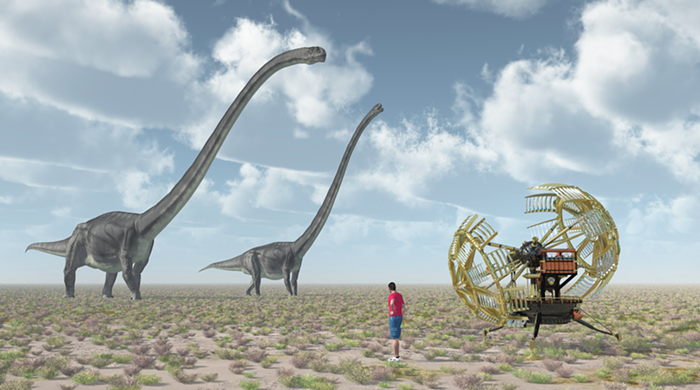MUCH ADO has been made about Anthony Lane's recent skin-crawling New Yorker profile of Scarlett Johansson—a weird up-skirt shot of a character study that reads like a grad school application to Esquire. Ostensibly meant as a preview for her role in Jonathan Glazer's remarkable new film Under the Skin, the fiftysomething Lane jizzes poetic over the actress' every physical attribute, at one point describing Scarlett as a 17-year-old thusly: "Ripeness was within reach, and almost everything about Johansson was complete, except her beauty... one more year, and everything would settle and soften into place." Yuck.
As radically grossout as Lane's old man fanfic is, it's just a particularly extreme reflection of the way ScarJo's celluloid charms are often employed on the big screen. Filmmakers—male filmmakers, especially—have a tendency to exploit Johansson as a kind of blank, beautiful object—a weird kind of emotional prop favored by long silences and longing glances. She's implemented as this beautiful, otherworldly thing—a vague, cipher-like canvas whose surface vividly reflects whatever meaning other people project upon it (this extends to the fantasies of middle-aged New Yorker contributors). It's an unseemly kind of mishandling that Glazer upends to marvelous effect in Under the Skin.
For the film's first half, an extraterrestrial Johansson stalks around Scotland in a big white van, searching pitilessly for men to seduce and harvest. Many of these sequences were shot guerilla-style, with Johansson actually luring unsuspecting prey off the streets of Glasgow—a densely brogued lot who, understandably, never imagine that one of the most famous women in the world would stop to offer them a ride. It's a consistently satisfying exchange—a voyeuristic manhunt made palatable by the black widow-ed (*wink*) gender reversal. Even in real life, she is functioning as merely a vessel for farfetched fantasies. There's a lot going on here, and Glazer knows it.
He plays with it constantly throughout Under the Skin—from the long, audience-incriminating point-of-view shots of her seductions (including a good deal of full frontal) to casting her literally as an otherworldly, man-eating thing. There's more, but I think it's probably best experienced without your defenses up.
Subtext aside, Under the Skin is sensually stunning. Glazer's meditative, ambiguous imagery certainly owes some debt to Kubrick, but his ambitions here have much more in common with Nicolas Roeg's strange ruminations—the director's The Man Who Fell to Earth being the film's most thematically and aesthetically obvious forbearer. Like most directors who came to prominence through music videos, Glazer's still a better image-maker than a storyteller—this film's themes are familiar and the third act falters in its ambiguity—but with images this consistently compelling, it's difficult to fault him. The soundtrack by Mica Levi of Micachu and the Shapes is also an ice-cold stunner—borrowing from the high-strung soundtrack work of Jonny Greenwood (borrowing from Ligeti), and shrouding Glazer's dark, unrelenting world in even greater severity.
Following Sexy Beast and Birth, Under the Skin is Glazer's first fully realized feature, and it's more than just a welcome and worthy addition to the arthouse sci-fi cannon: It's also a quietly subversive implication of the Anthony Lanes of this world, still too tone deaf to see it for what it is.



















